Research results that dogs want to 'help the suffering owner'

The story that 'cherished dogs act to help their owners' has spread to many countries and regions, and is described as an episode showing that dogs have a strong attachment to humans. On the other hand, there has been little scientific research into how much a dog actually wants to help its owner. There, a research team from the
Pet dogs (Canis lupus familiaris) release their trapped and distressed owners: Individual variation and evidence of emotional contagion
https://journals.plos.org/plosone/article?id=10.1371/journal.pone.0231742
Yes, your dog wants to rescue you | ASU Now: Access, Excellence, Impact
https://asunow.asu.edu/20200528-discoveries-yes-your-dog-wants-rescue-you
Your Dog Really Does Want to Rescue You, Research Finds
https://www.sciencealert.com/dogs-really-do-want-to-rescue-us-if-they-can
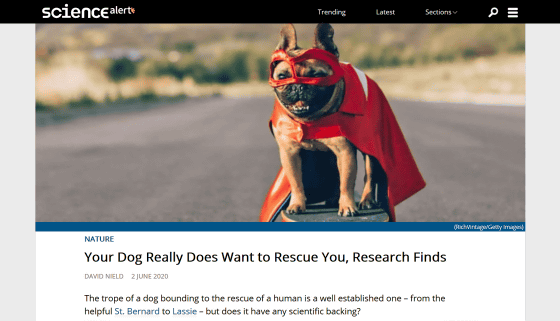
'This is a widespread legend,' said
The research team assembled 60 normal dogs and their owners who had no special training to rescue people for the experiment. In the experiment, the owner who received a lecture that made a real voice saying 'help' entered the box inside the room and called 'help', how the dog outside the box responded It was observed whether to do it.
The state of the experiment can be seen in the following movie.
Van Bourg Dog Rescue Study-YouTube
When the dog enters the room, the owner in the box first hits the floor 'four times'.
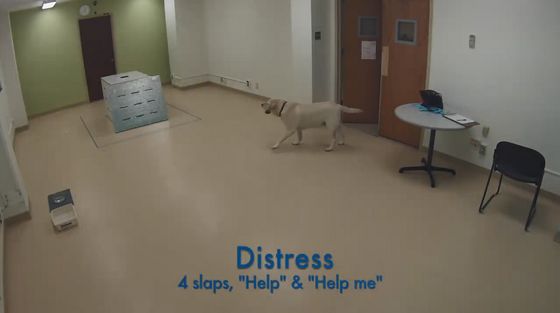
Then I screamed 'Help me!' and asked the dog for help. At this time, it was said that calling out the dog's name etc. was prohibited only by saying 'Help me!' If you call the dog's name, you will not be able to determine whether the dog 'helped because the owner was in distress' or 'have acted to obey the owner'.
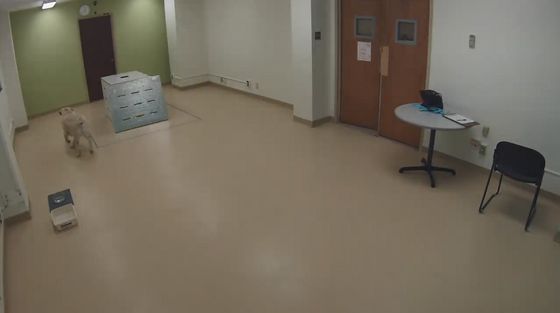
Many dogs were stressed by the owner's voice, which complained of distress, and barked and barked around the box.
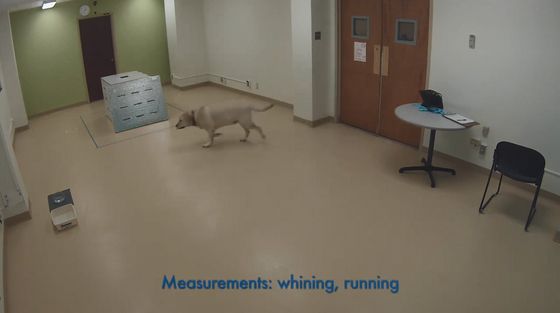
The lid of the box was designed to be moved by the dog thrusting its head, and when the lid was removed, the dog was deemed to have been able to rescue its owner.
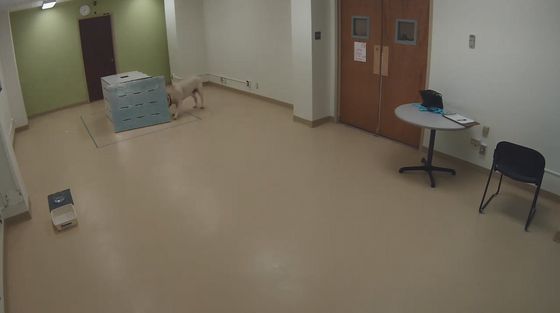
As a result of the experiment, 20 out of 60 animals, or one-third of the total, succeeded in helping the owner. 'It's not very impressive just because one-third of the dogs helped the distressed owner, but when you look closer, the results are really remarkable,' said Van Bourg. ..
Van Bourg's problem is that even if a dog wants to help their owner, a dog who doesn't know how to open the lid cannot rescue his owner. If this is not taken into account, it is possible that some dogs would have wanted to help their owner other than the one who actually rescued them. Van Bourg conducted further experiments on the same dogs to investigate this problem, which had not been deeply investigated in previous studies.
Additional experiments investigated whether the owner could put food in the box and the dog could open the lid to remove the food. As a result of this experiment, 19 dogs succeeded in opening the lid, and a smaller number of dogs succeeded in opening the lid than when the owner complained of pain. In addition, 16 of the 19 animals that succeeded in getting food, that is, 84% were successful in rescuing the owner.
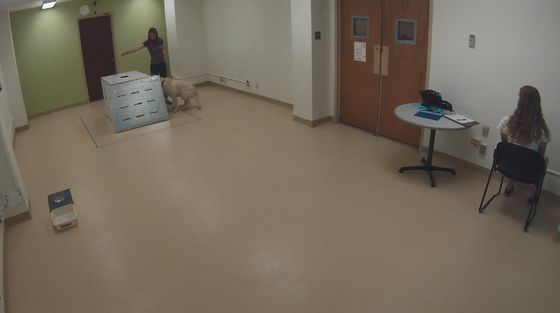
Van Bourg pointed out that without understanding whether each dog knew how to open the box, the percentage of 'dogs who wanted to save their owners' could not be evaluated. 'The fact that two-thirds of the dogs didn't open the box to get food was a pretty strong indication that they needed more abilities than just motivation to rescue their owners.' “Most dogs want to help you, but to rescue you need to know how they can do it,” Van Bourg said.
In another test, the owner entered the box and made a small 'loud-reading magazine' rather than a scream.
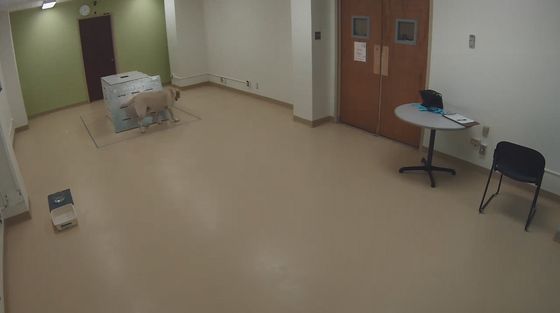
Sixteen dogs were opened in this experiment, four fewer than the test that called for help. In this way, although dogs rescued even if their owners did not necessarily complain, the number of dogs that succeeded in rescuing when they complained of pain increased because dogs simply said, ``Because I want to be near my owner, Not opened.'

The research team also investigated the stress response that the dogs showed in each experiment, observing behavior such as screaming, walking, and barking. As a result, it was found that the dog felt great stress when the owner complained of pain, but he did not feel much stress when the owner read the magazine.
Furthermore, in the test in which the owner complained of pain, the stress of the dog did not decrease even in the second and third trials, whereas in the test that the owner read the magazine, it was also found that the stress of the dog decreases when the trial is repeated. .. Van Bourg points out that although dogs adapted to the environment in a magazine-reading test, dogs were stressed because they couldn't get used to the environment if the test was painful. These observations indicate that the owner is 'transmitting emotions' to the dog.
'What's interesting in this study is that the dog really cares about people. Even without training, many dogs suffer,' Wynne said. We try to help those who are receiving it, and when the dog fails to rescue, we could see the dog being upset.' 'From now on, the rescue will bring the dog closer to its owner. I want to investigate when I can go to the country and when the rescue does not bring the dog closer to its owner.'

Related Posts:







